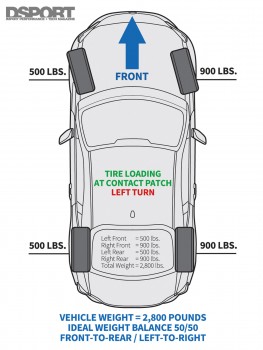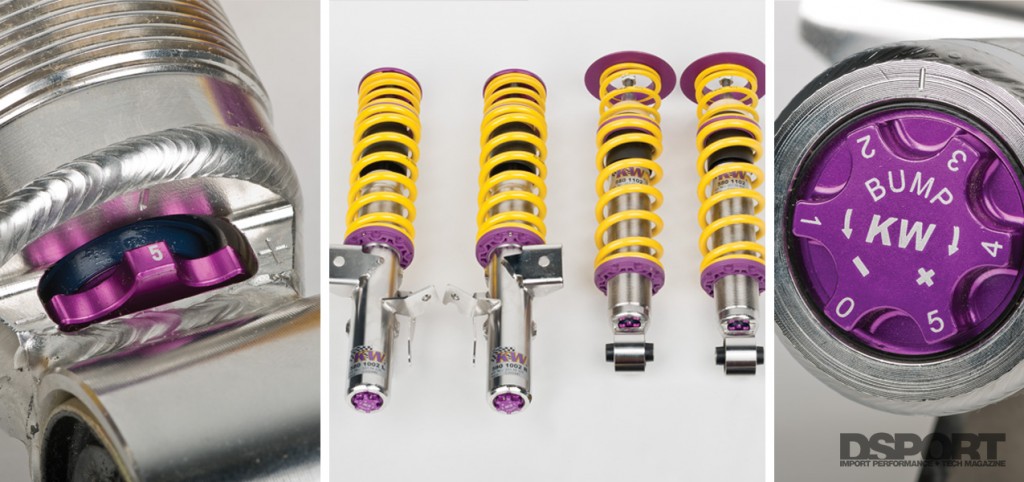Number Three: Balance
The third thing you need to know to make your car handle better is how to adjust its  balance. This is not a really hard task if you remember that more load at one end of the car will make that end start sliding earlier. For example, a nose-heavy front-drive car would naturally have a lot of understeer, and this is something that you want to reduce. What you should do is think about the problem in reverse. Instead of trying to reduce understeer, you need to think about increasing oversteer.
balance. This is not a really hard task if you remember that more load at one end of the car will make that end start sliding earlier. For example, a nose-heavy front-drive car would naturally have a lot of understeer, and this is something that you want to reduce. What you should do is think about the problem in reverse. Instead of trying to reduce understeer, you need to think about increasing oversteer.
More oversteer comes from putting more load on the rear tires. More load on the rear tires comes from installing a stiffer rear anti-roll bar, stiffer rear springs, stiffer rear shocks or all of the above. If you find you need more understeer in your FF vehicle, try stiffer components at the front. The entire premise also works the other way around; if you’re already too stiff on one end, go softer at the opposite end to obtain the desired effect.
Now, assuming you’re starting with a reasonably competent setup and you want to start adjusting the balance, there is something to keep in mind; a change in anti-roll bar diameter will make the most dramatic change in handling balance. Changing spring rates is probably second in terms of effects produced by change. If you have an adjustable sway bar (where you can change the lever arm) this is probably third. Turning the knob on adjustable shocks is a distant fourth; this is best reserved for fine-tuning an already good setup.
Just beware; if you haven’t properly addressed suspension travel, your tuning attempts might do exactly the opposite of what you want. A car that understeers because the front suspension bottoms out in hard corners could actually get less understeer from a bigger bar because the bar would reduce roll, which would lift the outside front suspension back off the bump stop. That’s why the suspension travel thing is the second thing you needed to know, and this is the third.
Number Four: Dampers
 Dampers are voodoo. Just like the black arts, they are both extremely powerful and virtually impossible to figure out without years of study. Good dampers can make a car ride and handle beautifully. Bad ones can render your every attempt at adjustment useless. Figuring out how to choose good dampers is even harder than figuring out tires, but it works on the same basic principle: Find some good dampers on someone else’s fast car and ask what they are and who tuned them. Then go buy your dampers from them.
Dampers are voodoo. Just like the black arts, they are both extremely powerful and virtually impossible to figure out without years of study. Good dampers can make a car ride and handle beautifully. Bad ones can render your every attempt at adjustment useless. Figuring out how to choose good dampers is even harder than figuring out tires, but it works on the same basic principle: Find some good dampers on someone else’s fast car and ask what they are and who tuned them. Then go buy your dampers from them.
–
–





